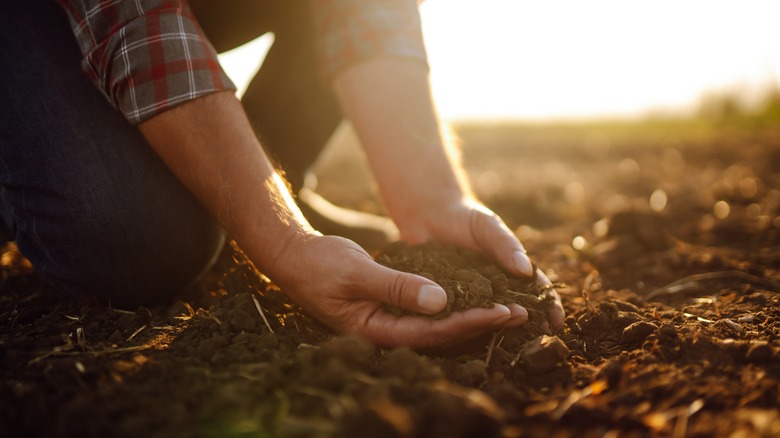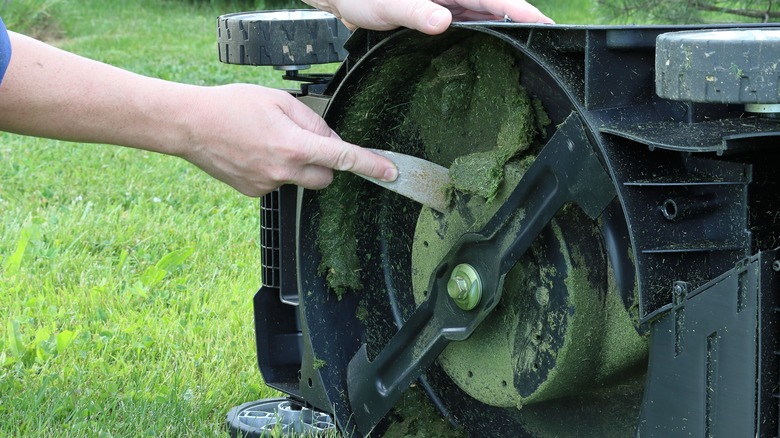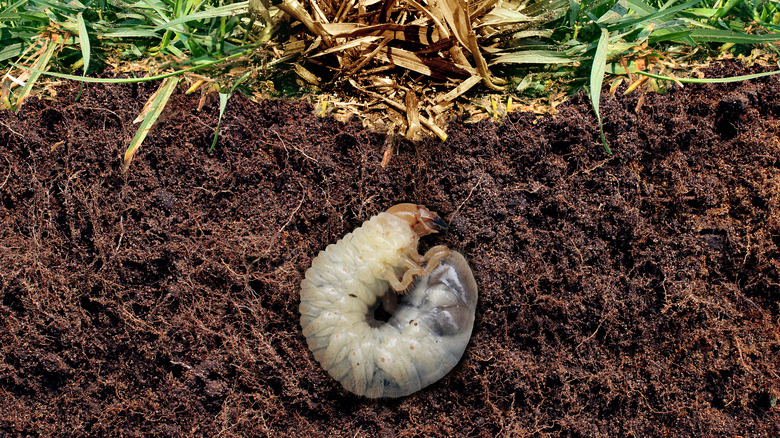10 Easy Ways To Help Your Grass Look Greener
Have you ever looked at your lawn and thought ... meh? You're not the only one; dull or yellow grass is a common problem for homeowners everywhere. The question is, what causes it? According to JC's Landscaping, many factors contribute to your less-than-green grass, such as incorrect amounts of fertilizer, inconsistently mowing the lawn, inadequate water supply, damage from pets, and more. If your grass is lacking nutrition, you will notice it slowly getting less green each day.
We know how exhausting it can be to keep up with your lawn, but it's imperative if you want to have green grass. Thankfully, you can take steps to ensure your grass looks healthy and hydrated that don't require much work or supplies; however, the state of your grass determines how much effort you will have to put into maintaining its beautiful green color. With that being said, here are 10 easy ways to help your grass look greener.
1. Keep your grass fertilized
To prevent dull, yellow grass, you need to ensure you're correctly fertilizing it during the autumn season so it's ready for spring. For a deep green, use a slow-release, organic fertilizer with a tiny amount of iron, such as Milorganite. Incidentally, this type of fertilizer is also eco-friendly.
2. Water your lawn the correct way
If you're experiencing a drought in your area, this can also cause your lawn to turn yellow and eventually die. To ensure green, healthy grass. Try using one of two options: water your grass more frequently using less water, or water it less frequently with more.
3. Use grass seeds
Using grass seeds helps to grow your lawn into other parts of your yard, filling out the rest of your yard space where grass may be lacking. It also livens up any grass that looks a bit colorless or dead. For best results, save the seeding until spring or fall.
4. Test your soil
To ensure your grass is at a proper pH level, you must regularly test your soil. Your grass should have a pH level somewhere in the 6.5 to 7.0 range. If your lawn's pH level falls within that range, it takes in the necessary nutrients to stay alive and green.
5. Rid your grass of weeds
Weeds are some of the most common grass-killers out there, so you must kill any lurking in your lawn; however, you have to be careful which products you use to ensure your grass doesn't die with them. Opt for organic weed killers, or use organic gluten cornmeal as an alternative.
6. Aerate your lawn
When aerating your grass, you're essentially digging tiny holes so air, water, and nutrients can make it to the roots. When the roots aren't healthy, they cause the grass to turn brown.
7. Replace your lawn mower blades
This seems odd, but replacing the blades on your lawn mower can damage your grass. Lawnmowers with dull blades cause discoloration of your grass, as well as lawn disease, which eventually kills it altogether. They can also rip up your grass while you're mowing, so replacing your blades is necessary.
8. Exterminate pests living in your grass
If you notice unwanted insects have taken over your grass, it's time to say goodbye to those little pests. Certain bugs, such as grub and chinch bugs, can ruin your grass, causing it to turn yellow or brown and potentially die.
9. Mow higher in the summer
Believe it or not, mowing your grass at a higher level in the summer gives your lawn's root system more shade, preventing it from drying out in the hot summer heat.
10. Clean up pet waste
Like weeds and bugs, pet waste is an easy way to yellow or brown your grass, as it over-fertilizes the area where your pet does its business. Staying on top of cleaning your lawn is essential so the waste can't ruin it.










